Benedict Anderson’s widely-cited description of nations as ‘imagined communities’ in his 1983 book of the same name is sometimes employed to dismiss nations and nationalism as fictions; unreal things that can be taken apart as easily as they apparently sprung up. But his word is ‘imagined’ not imaginary; and one thing Anderson does is draw our attention to the particular way in which modern nation-states were made possible by institutions and technology. Printing presses and distribution systems for newspapers; railway networks and synchronised clocks; children’s school books produced in a standardised language – all stubbornly solid things that enable millions of people who have never met one another and probably never will to think of themselves as a single community with a shared identity.
National museums – museums that are supposed to speak for or to a country – play a somewhat odd role in this arrangement. Their frame of reference might stretch back thousands of years, or across continents. Yet they are generally consigned to a single building, in a fixed location. This is often turned into a declaration of power – the national government places the national museum in the capital city of the nation – but it also can seem anachronistic, even if their missions change over time, and particularly in an age where technology allows us to take part in collective acts of imagination on a global scale.
Because I’ve spent several years working in different parts of Europe, I’ve had the opportunity to visit national museums in various countries, and reflect on the stories they are trying to tell – through archaeology or much more recent history. What strikes me is that although the museums are often trying to say something definite and permanent about the nation they represent, this is at odds with the nature of the material they contain and the way in which it is displayed. This is most obvious in the more traditional museums: the ones that present neat rows of artefacts arranged by chronology or types. The museums of archaeology in Athens and Sofia, for example, contain objects from hundreds, if not thousands of years before the modern states of Greece and Bulgaria were formed. Modern Greek nationalism has often drawn on antiquity to give itself legitimacy; but to what extent is this eclipsed by Ancient Greece’s place in ‘Western civilisation’ or ‘world heritage’? In Sofia this is more complex, because the amassed objects – Greek, Roman, Thracian – come from a range of linguistic and cultural traditions. Are we being told that Bulgaria is an ancient nation, or that its territory is best thought of as a place of comings and goings? The dislocation becomes more obviously political when we consider something like the British Museum, which, on the whole contains objects acquired from other countries, often in a process of imperial conquest. In claiming ownership of an object – cleaning it up, studying it, displaying it, giving its context – a museum also reveals that other people might have claimed ownership of it before. And although the British Museum explicitly casts itself today as a curator of world heritage, it does not escape these tensions, as the ongoing dispute with Greece over the Parthenon Marbles suggests.
In Imagined Communities Anderson also considers how shifting power relations contributed to the spread of nationalism: from insurgent liberation movements in Latin America, to its adoption as a form of control by European imperial powers, who later had it turned against them by their former subjects. Sometimes a museum captures the sense of such a shift. In the case of Kiev, two museums do this. One is the giant Second World War memorial complex that sits on a hill above the river Dnieper. Opened in 1981 when Ukraine was part of the Soviet Union, the main museum sits underneath the giant ‘Mother Motherland’ statue of a woman holding a sword and a shield that bears the insignia of the USSR. You approach it via a walkway lined with oversized human figures – soldiers, workers, peasants – carved in relief. Inside you are taken on a strict route through a series of circular galleries (museum attendants are on hand to tell you if you’ve deviated) that give an official Soviet history of the ‘Great Patriotic War’. It is overwhelming, and deliberately so: the hundreds upon hundreds of rusted weapons, uniforms, ID cards, family photos and so on emphasise the scale of the slaughter without deviating from the heroic Soviet narrative of resistance and eventual victory. The Holocaust is alluded to, but Jews are not mentioned by name.
Across town, a more modest building houses a museum to the Chernobyl nuclear disaster of 1986. Opened in the 1990s, when Ukraine had become an independent republic, the narrative here is one of Soviet mismanagement and individual human tragedy. Religious imagery – a Pietà-like figure looms over the displays – provides a spiritual locus; a role fulfilled by Communist iconography in the earlier museum. Yet the visual language is almost identical: the circular museum route, the assembled photographs hung in similar style – 1990s Ukraine was trying to express something new with old tools. A further twist has been provided by the current spasm of nationalism Ukraine is going through, linked to the war with Russian-backed separatists in the east of the country. In 2015, Ukraine’s parliament outlawed the term ‘Great Patriotic War’ and renamed the memorial complex the National Museum of the History of Ukraine in the Second World War. Objects commemorating the current conflict have been added to the museum’s foyer, although Mother Motherland retains her hammer and sickle for the moment. Monuments to the dead often sit at the heart of national ideology – and you mess with them at your peril, even when states are dissolved and borders change.
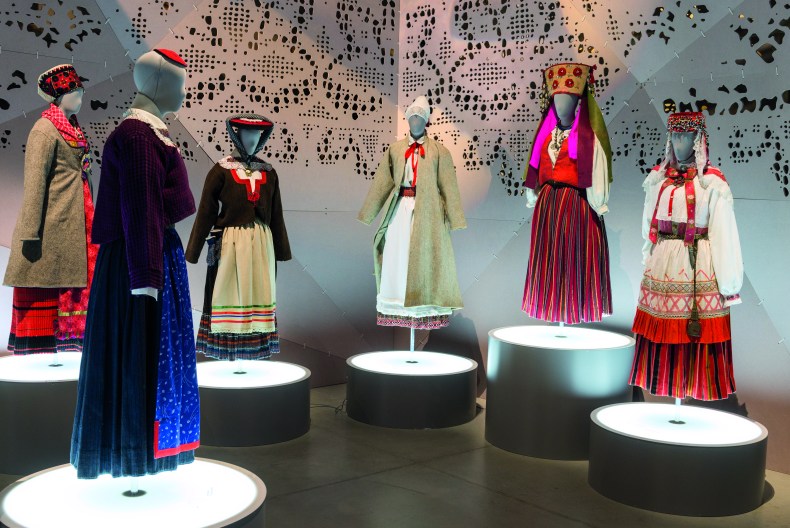
Costume display in the Estonian National Museum, which opened in Tartu in 2016. Courtesy Estonian National Museum
There are other ways of responding to recent history. Estonia, in its new national museum, which opened in 2016, largely tries to avoid the awkward parts by focusing on ‘ordinary’ Estonians. Located outside the city of Tartu – deliberately away from the capital Tallinn, which like the other Baltic States has a museum that treats Nazi and Soviet occupations as two of a kind – the Estonian National Museum displays objects from everyday life from prehistory to the 21st century. Here, too, is a reminder that maintaining a national identity requires a constant process of inclusion and exclusion. Modern Estonia’s population is about a third Russian – a legacy of Soviet industrialisation and resettlement policies, which some Estonians regard as a deliberate attempt to dilute their identity – but this does not feature significantly in the permanent collection. Instead, there is a gallery devoted to other ‘Finno-Ugric’ peoples; speakers of languages related to Estonian who live mainly in the former USSR.
These kinds of museums frequently refer to the destructive potential of other people’s nationalisms, but it’s unusual for a country to face the implications of its own. Germany is well-known for doing this with regards to its Nazi past with, for example, the memorials to Jewish, Roma and LGBT Holocaust victims placed near the Bundestag in Berlin. But a recent major exhibition at the German Historical Museum took the rare step – rare for a former imperial power in Western Europe, in any case – of examining its own history of colonialism in an unsparing fashion. This went hand-in-hand with a political initiative to make amends with Namibia for the genocide of Herero and Nama people in the early 20th century, although Germany has balked at the idea of reparations. The exhibition was fairly conventional in terms of its staging, but presented colonialism without euphemism as a system of violent exploitation based on racist ideology – in fact, visitors were told this on entry by the first information board. And a final display encouraged people to think about the unequal relationships that persist between countries and people as a legacy of Europe’s colonial past. We were shown maps that illustrated the unequal flow of wealth and power between contemporary Africa and Europe.
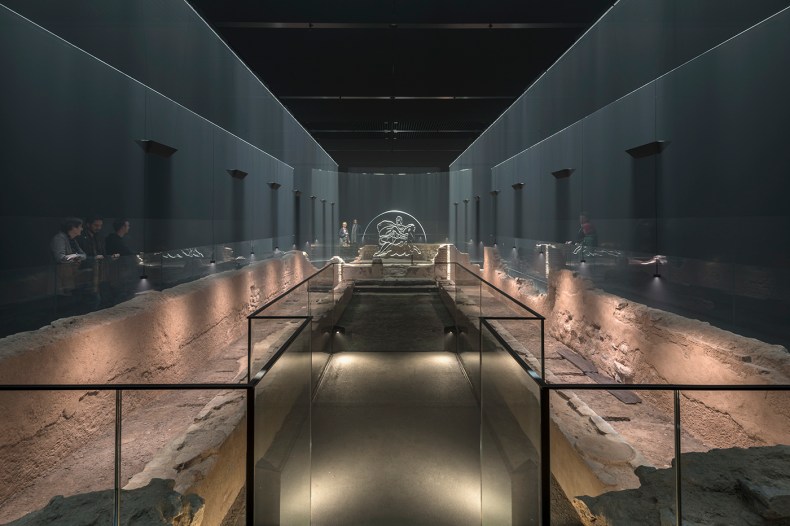
Remains of the Temple of Mithras in the London Mithraeum Bloomberg Space. Photo: James Newton
Yet even here the tension between the intended message and the museum’s contents is apparent. To what extent can a ‘national’ story help us understand a phenomenon – colonialism, a world war, the rise and fall of an ancient civilisation – that crosses borders? How much is this about imparting knowledge, and how much is it about using the power of narrative, and the authority of an official museum, to shape a new version of an old identity; perhaps, for instance, a Germany that has come to terms with and moved beyond its past mistakes?
In this context it’s worth considering a museum that, superficially, has nothing ‘national’ about it. Until a few years ago, passengers on the number 76 bus in London would have seen a low, rectangular concrete and stone structure as they passed down Queen Victoria Street in the City. It was the remains of a Roman temple, dedicated to Mithras, unearthed during construction work in 1954. For almost 50 years, the temple ruins were a part of public space, open to view and surrounded by unglamorous municipal concrete and railings. Today, a new European headquarters for the global financial company Bloomberg sits on the site, and the temple has been relocated to the basement – closer, apparently, to its original location on a bank of the Walbrook, a lost tributary of the Thames. Entrance to the ‘London Mithraeum’ is free, but by appointment: you are greeted by an attendant who gives you a tablet computer and puts you in front of a glass display case while you wait for your allotted 15 minutes in the basement. Roman objects found during excavations by the Walbrook are displayed in the case, and pressing the silhouette of one on the tablet brings up an explanation. There are leather shoes, bits of masonry, and the wooden holder of a clay writing tablet with some letters scratched into it. This, the modern tablet tells you, is the earliest record of a financial transaction in the City of London.
Downstairs, the ruins have been cleaned up and placed below a visitors’ walkway. The room is mostly dark, and after a few seconds there begins a sound and light show that evokes the (mostly hypothesised) Mithraic ritual of the temple. Shadows flicker, the room fills with dry ice, and disembodied voices chant in Latin. Amid all this, the remains of the temple sit indifferently, much as they did next to the traffic of Queen Victoria Street for several decades. On the one hand, Bloomberg has used its resources to preserve a neglected object and help educate people about it. On the other, it has symbolically walled off what was previously held in common, in order to tell a story about itself: that an international corporation can have values, history, roots too. As ever, new technology and new institutions lead to new claims of belonging.
From the March 2018 issue of Apollo. Preview and subscribe here.
Unlimited access from just $16 every 3 months
Subscribe to get unlimited and exclusive access to the top art stories, interviews and exhibition reviews.

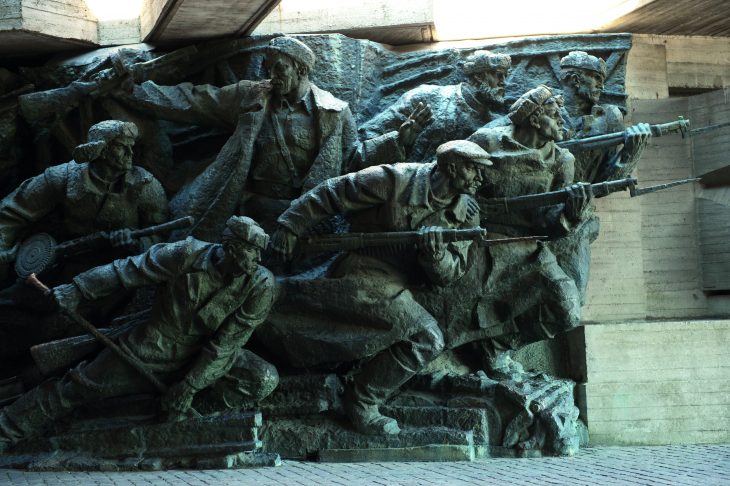
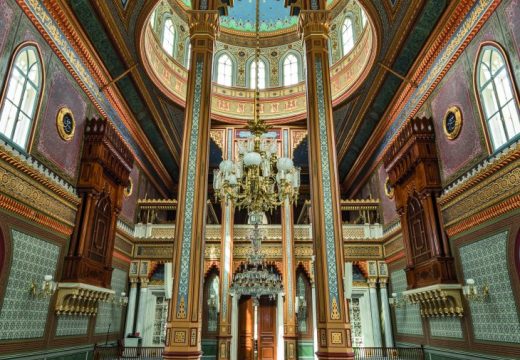
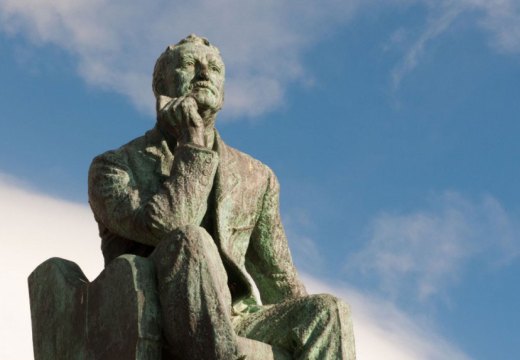
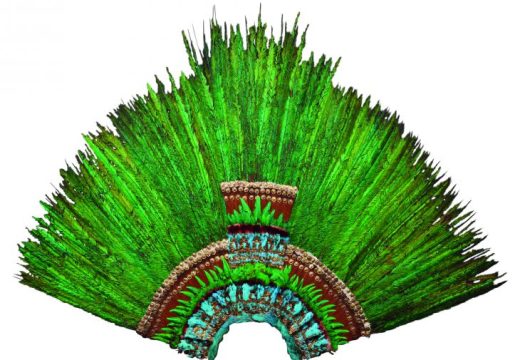









![Masterpiece [Re]discovery 2022. Photo: Ben Fisher Photography, courtesy of Masterpiece London](http://www.apollo-magazine.com/wp-content/uploads/2022/07/MPL2022_4263.jpg)
It’s time for the government of London to return to its rightful home